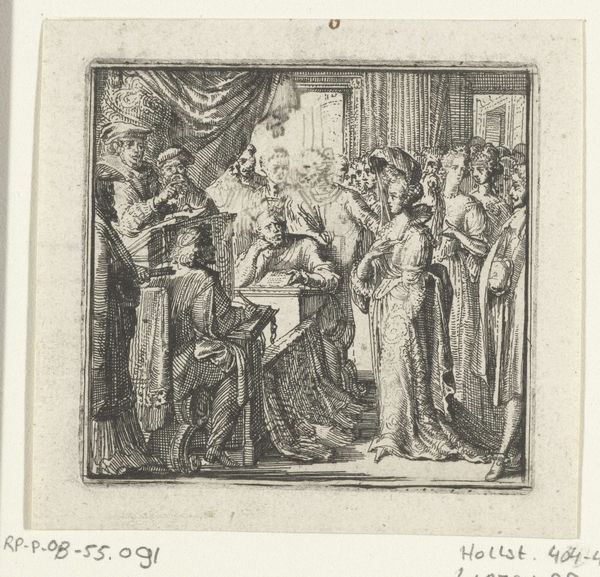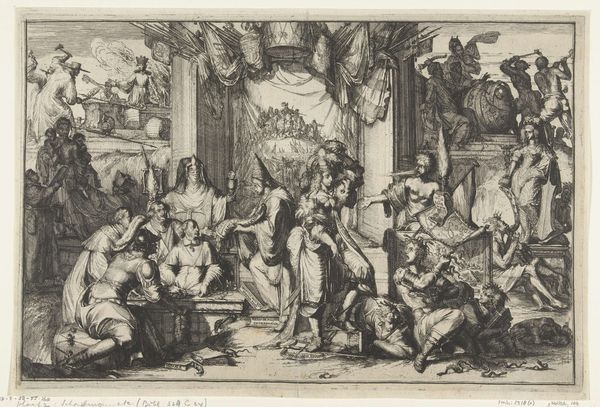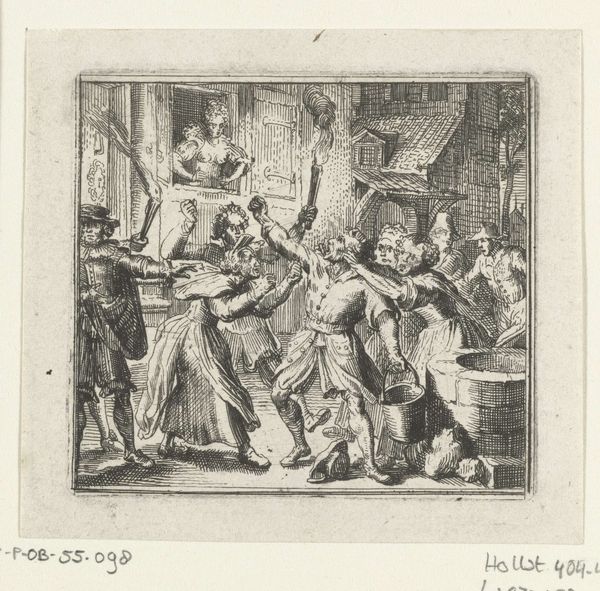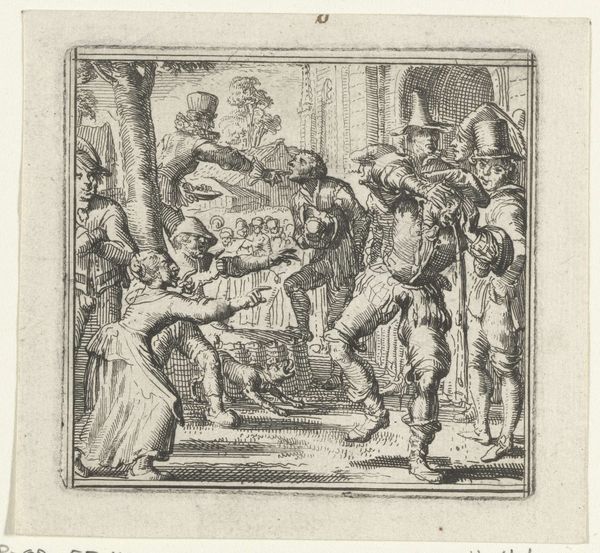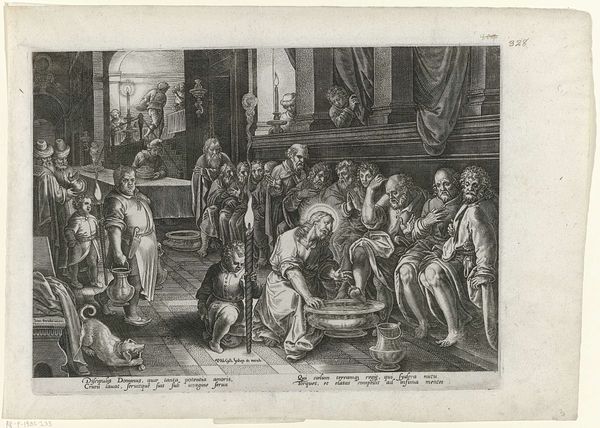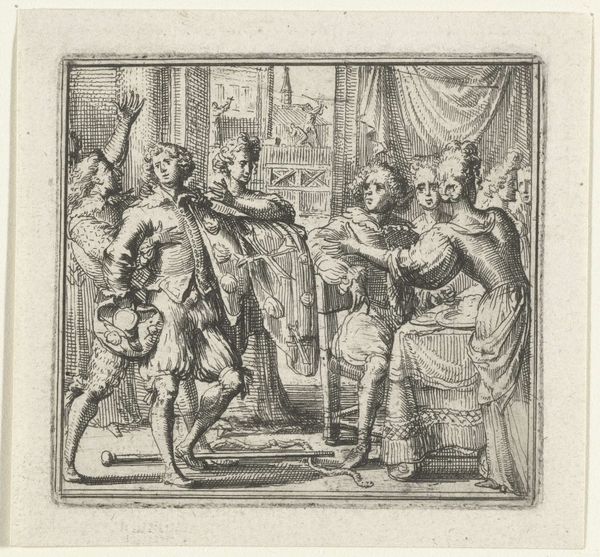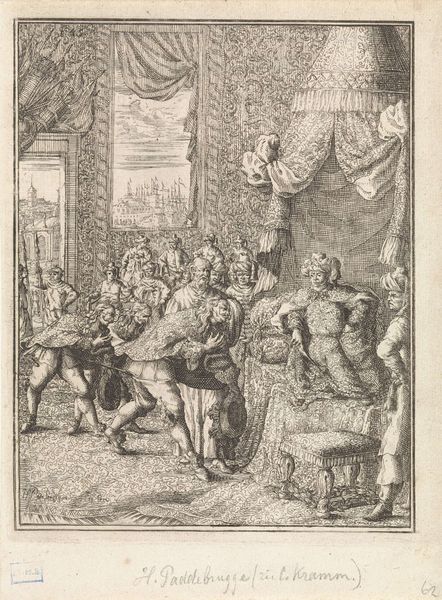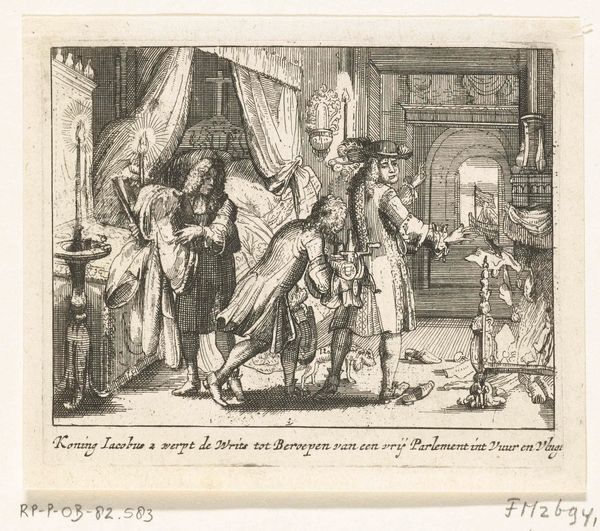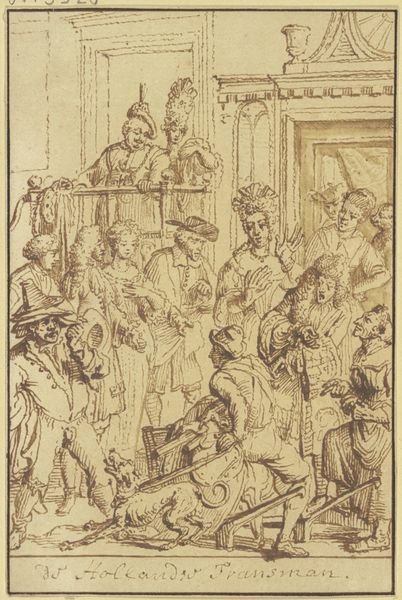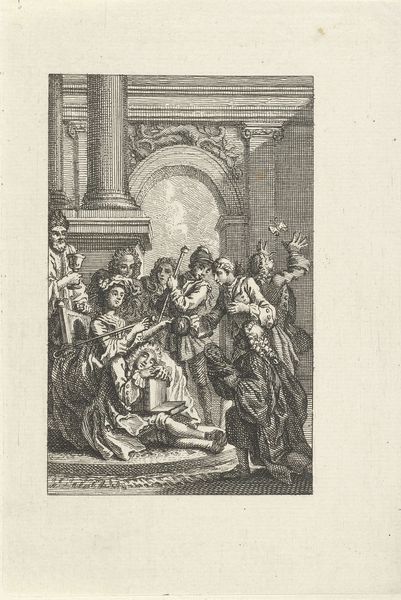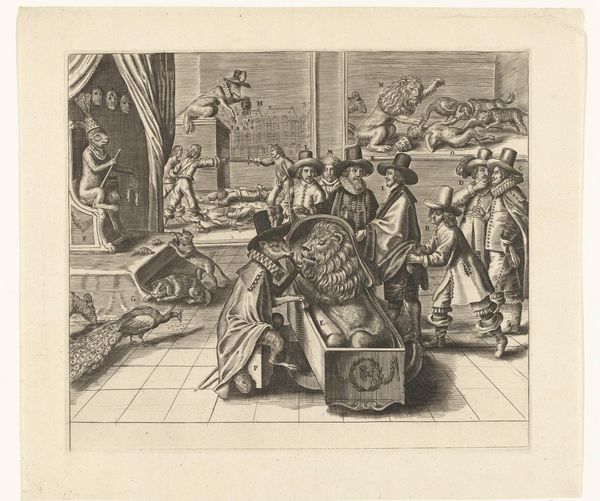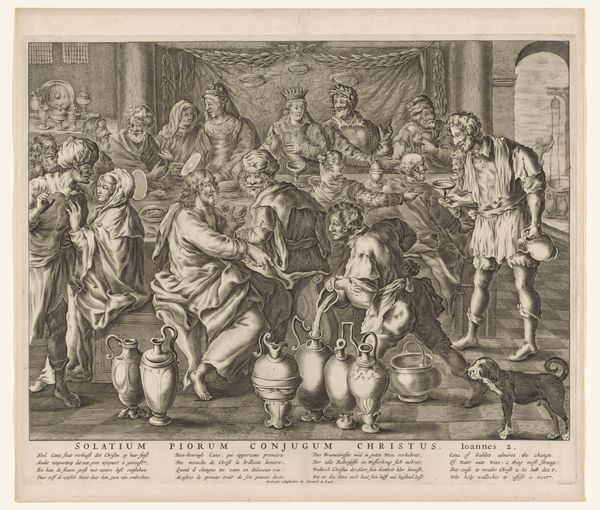
print, etching, engraving
#
comic strip sketch
#
aged paper
#
narrative-art
#
baroque
# print
#
etching
#
old engraving style
#
sketch book
#
figuration
#
personal sketchbook
#
pen-ink sketch
#
line
#
pen work
#
sketchbook drawing
#
genre-painting
#
history-painting
#
storyboard and sketchbook work
#
sketchbook art
#
engraving
Dimensions: height 74 mm, width 78 mm
Copyright: Rijks Museum: Open Domain
Editor: So, this is "Illustration for Boccaccio's Decameron" by Romeyn de Hooghe, an etching from 1697. The scene is crammed with figures; there's almost a theatrical feel to it. What historical context should we consider when we look at this work? Curator: Well, given that this illustrates Boccaccio's "Decameron," it is critical to know something of the book's original context: The Decameron was written in the wake of the Black Death in Florence, a text of secular and social recovery. Given that Hooghe produced his illustration centuries later, it reflects on the reception of this book, on what society in 1697 considered important from it, and what elements had remained relevant. It is important to note how later adaptations respond to and reshape cultural understanding. Why do you think he returned to these stories? What function did representing them have at the time? Editor: That’s interesting… Perhaps in 1697 it offered a sense of escapism or social commentary that resonated with the artist's society too? Curator: Precisely. De Hooghe was very interested in representing scenes of everyday life, sometimes from an elevated perspective. How might those social dynamics have shifted or remained static in the intervening centuries? Think of the societal norms surrounding plague and mortality in both time periods. What kind of continuities and shifts do you imagine, judging by this scene? Editor: I guess, looking at the figures’ attire, we see a marked change in fashion, and I’m also now wondering if the story itself would have had a different political weight almost 400 years after it was written. Curator: Exactly. It’s also important to see how the visual language reflects the time it was made in, as well. Studying its cultural influence in art allows a glimpse into shifts in social values, or sometimes the unfortunate maintenance of established ones. Thank you for taking me on this thoughtful journey! Editor: And thank you! I hadn't considered that angle before, of art shaping our views on politics and society.
Comments
No comments
Be the first to comment and join the conversation on the ultimate creative platform.
